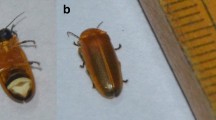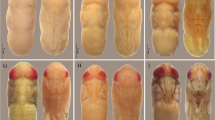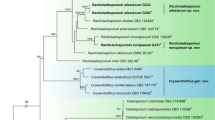Abstract
IN a recent communication1 under this title, Mr. A. C. Evans states that ” Ratcliffe2 has recently suggested that there may possibly be two physiological races of L. sericata, as the length of the pupal period of this insect at 32° C. in Scotland is 5.4 days while in France at the same temperature it is 8 days”. The latter figure was obtained by Ratcliffe (as he states) from an earlier publication of mine3 where I was quoting Cousin4. Evans claims that my quotation is inaccurate and should be 4.9 days, but on further reference to Cousin's work4, I find that it is perfectly correct.
This is a preview of subscription content, access via your institution
Access options
Subscribe to this journal
Receive 51 print issues and online access
$199.00 per year
only $3.90 per issue
Buy this article
- Purchase on SpringerLink
- Instant access to full article PDF
Prices may be subject to local taxes which are calculated during checkout
Similar content being viewed by others
References
NATURE, 137, 33 (Jan. 4, 1936).
Ann. Appl. Biol., 22, 742 (1935).
Ann. Appl. Biol., 21, 267 (1934).
C.R. Soc. Biol., 101, 788 (1929).
Bull. Biol. France, Belg., Suppl. 15 (1932).
Ann. Appl. Biol., 17, 554 1930).
Author information
Authors and Affiliations
Rights and permissions
About this article
Cite this article
DAVIES, W. Physiological Races of Lucilia sericata, Mg. Nature 137, 320 (1936). https://doi.org/10.1038/137320a0
Issue date:
DOI: https://doi.org/10.1038/137320a0
This article is cited by
-
Skatole as a Root Forming Substance
Nature (1937)



